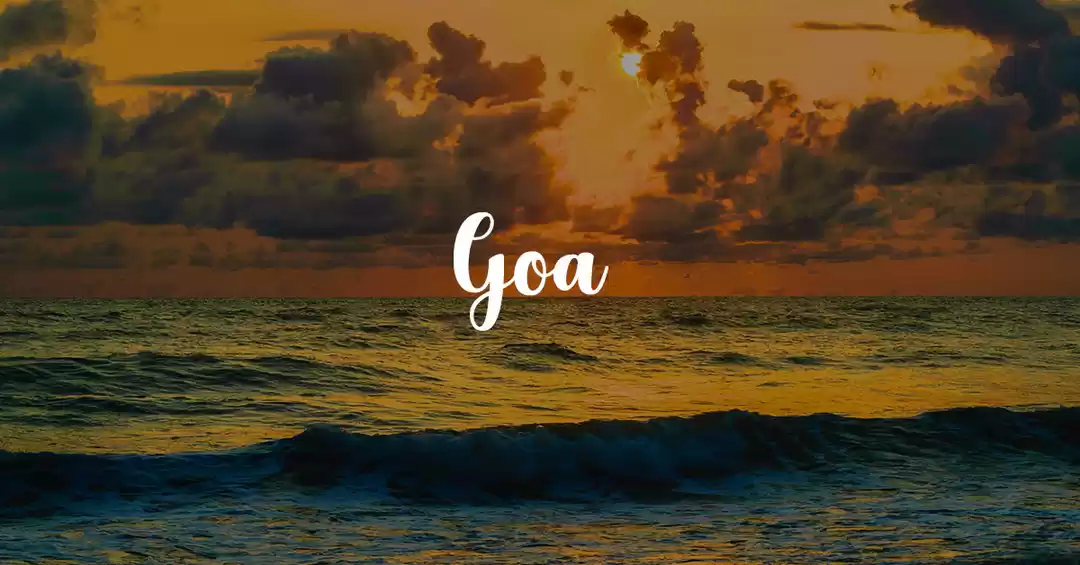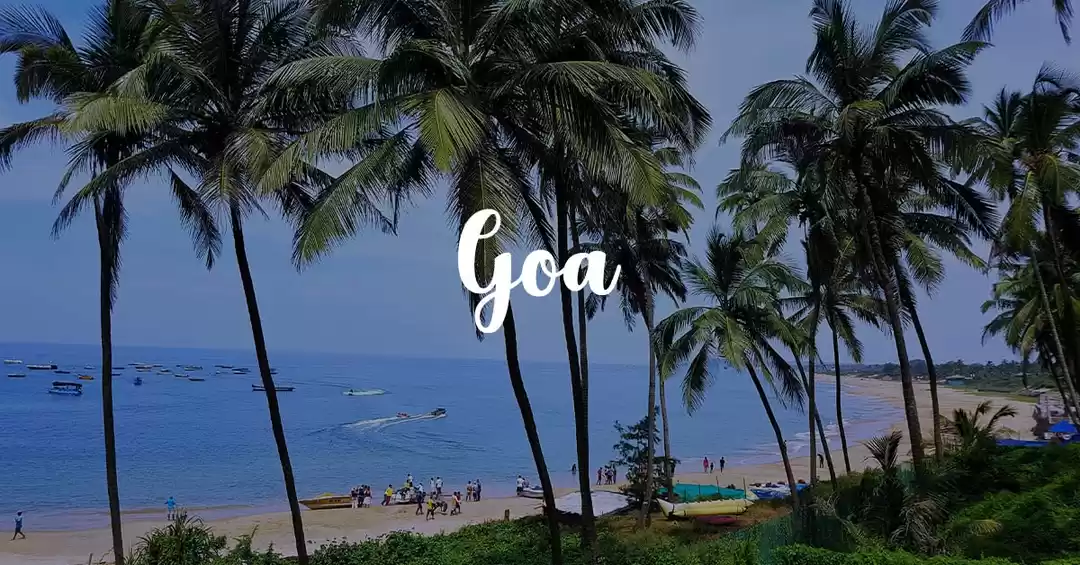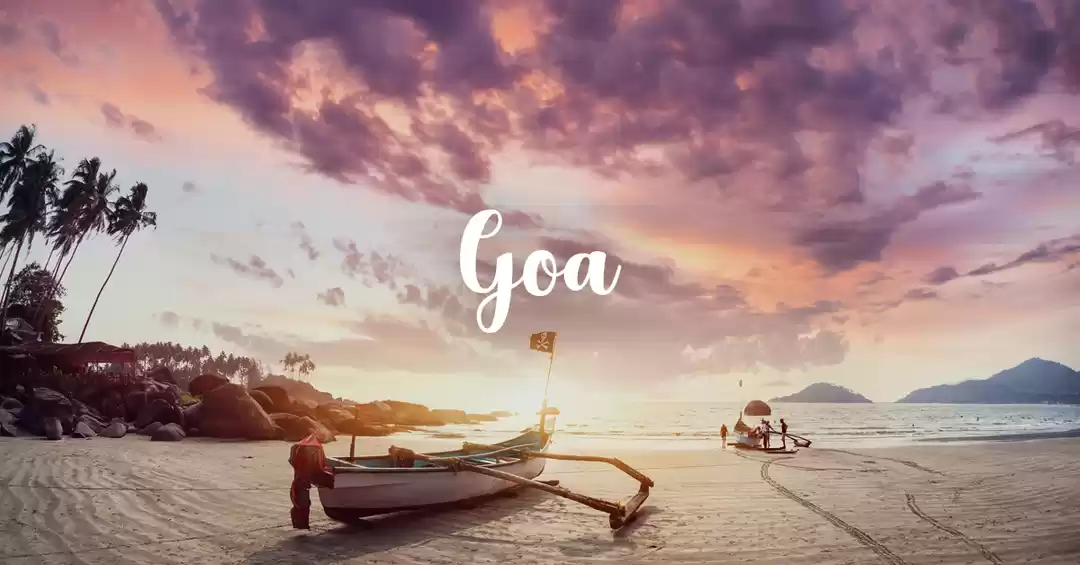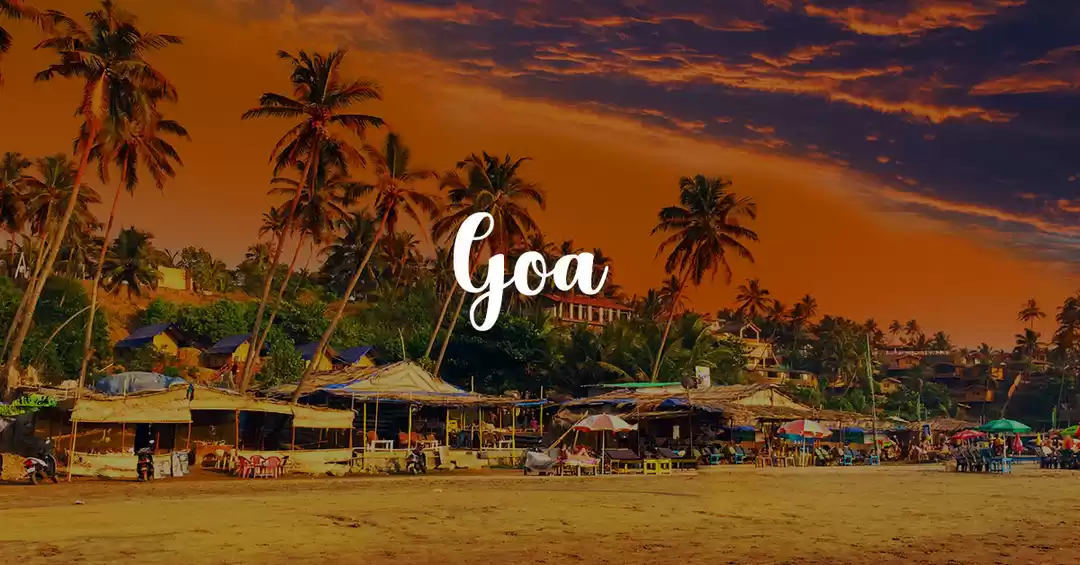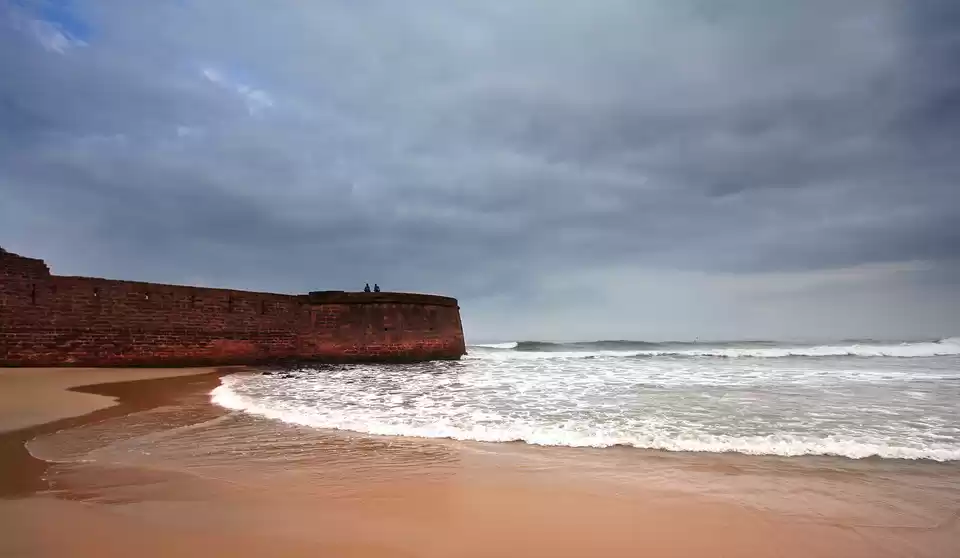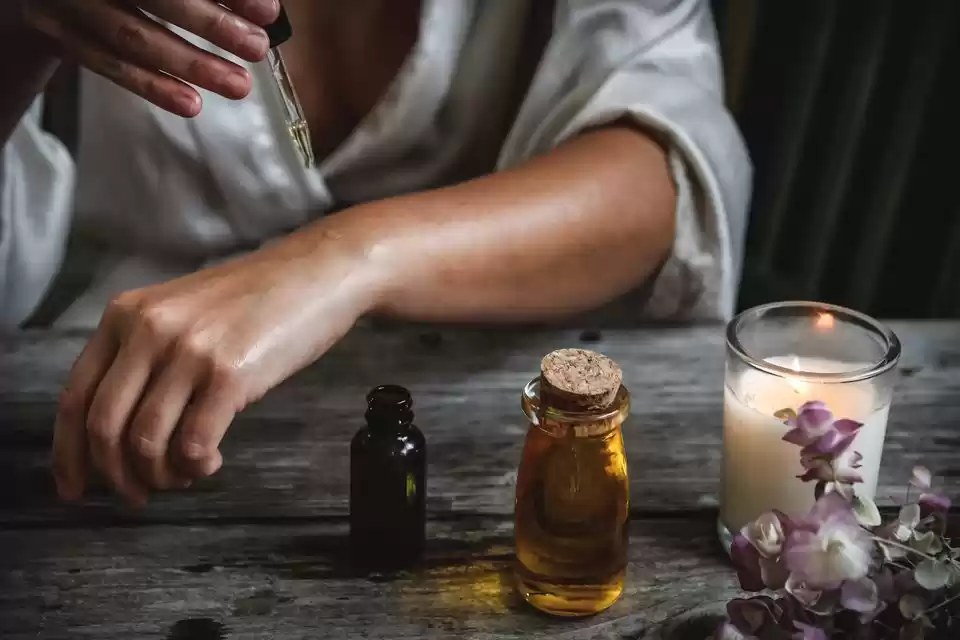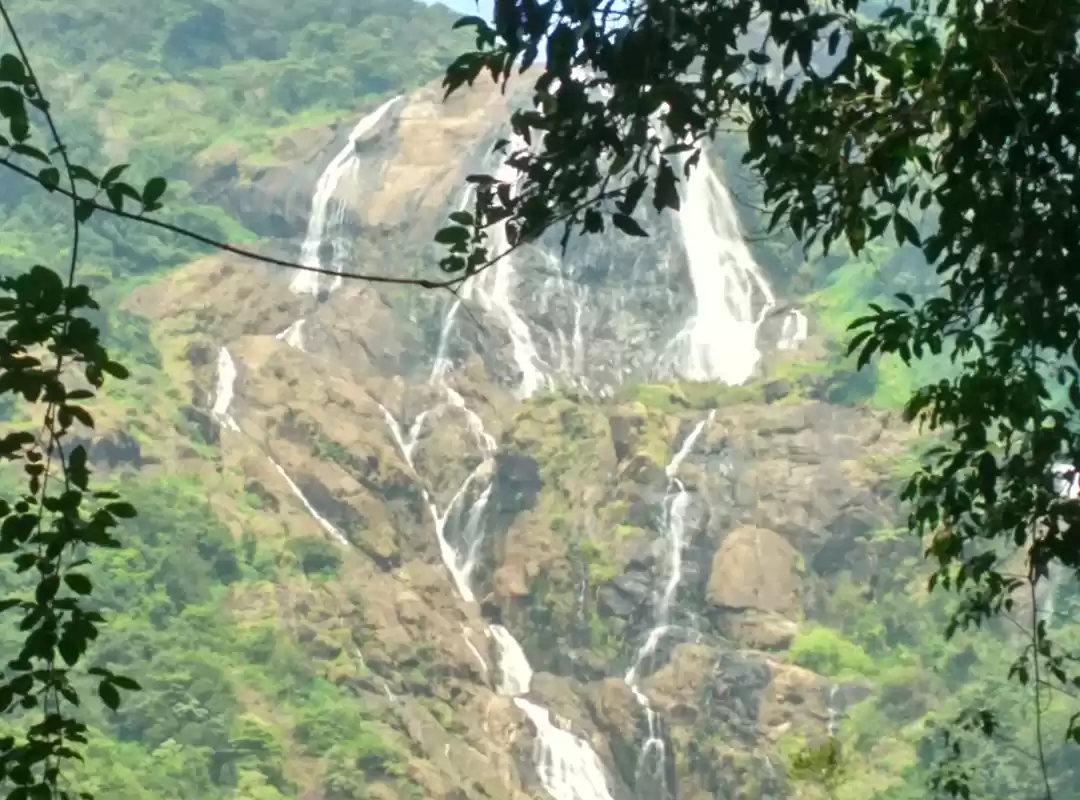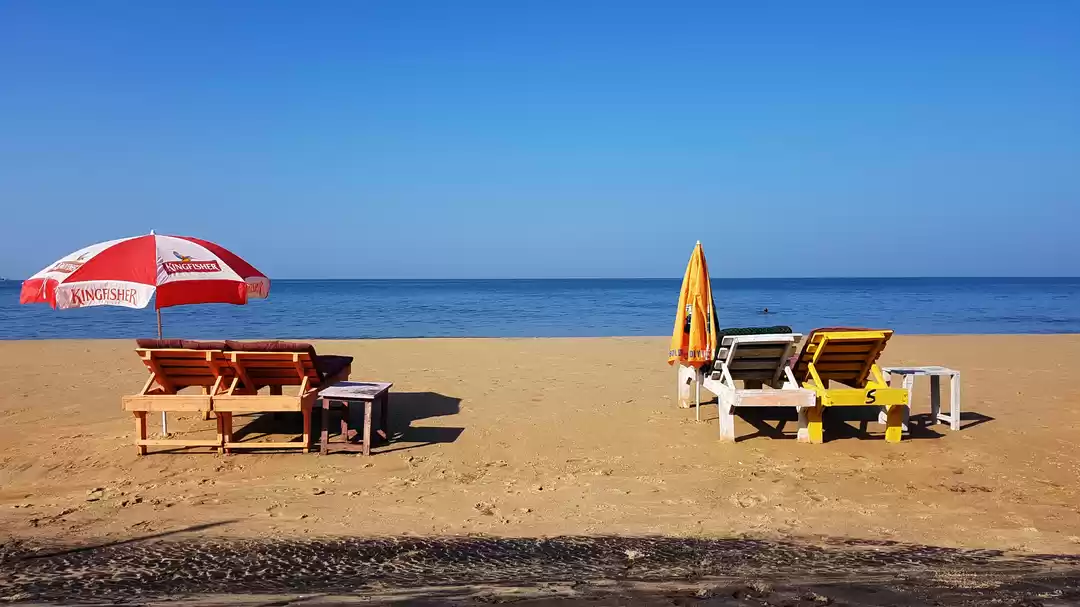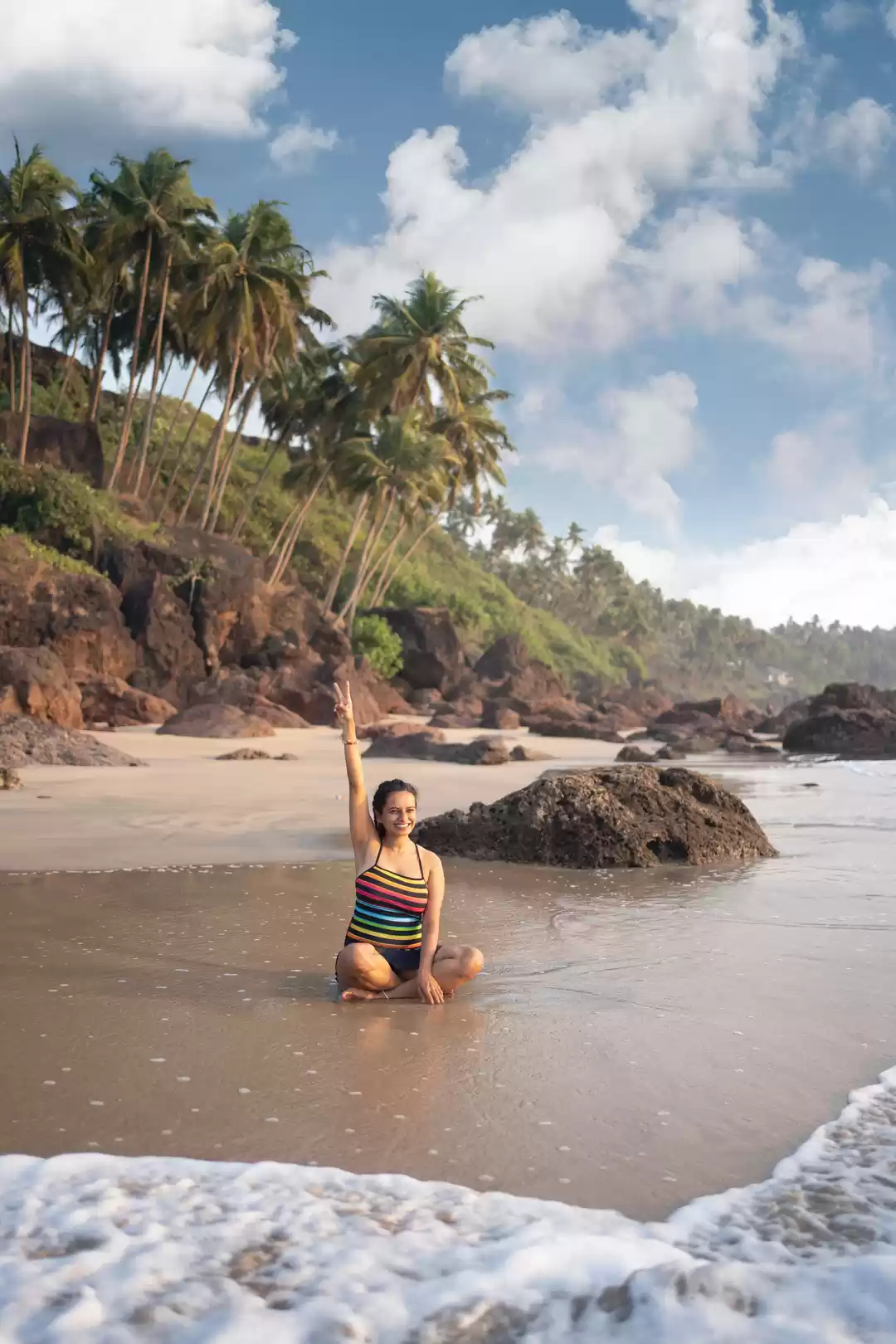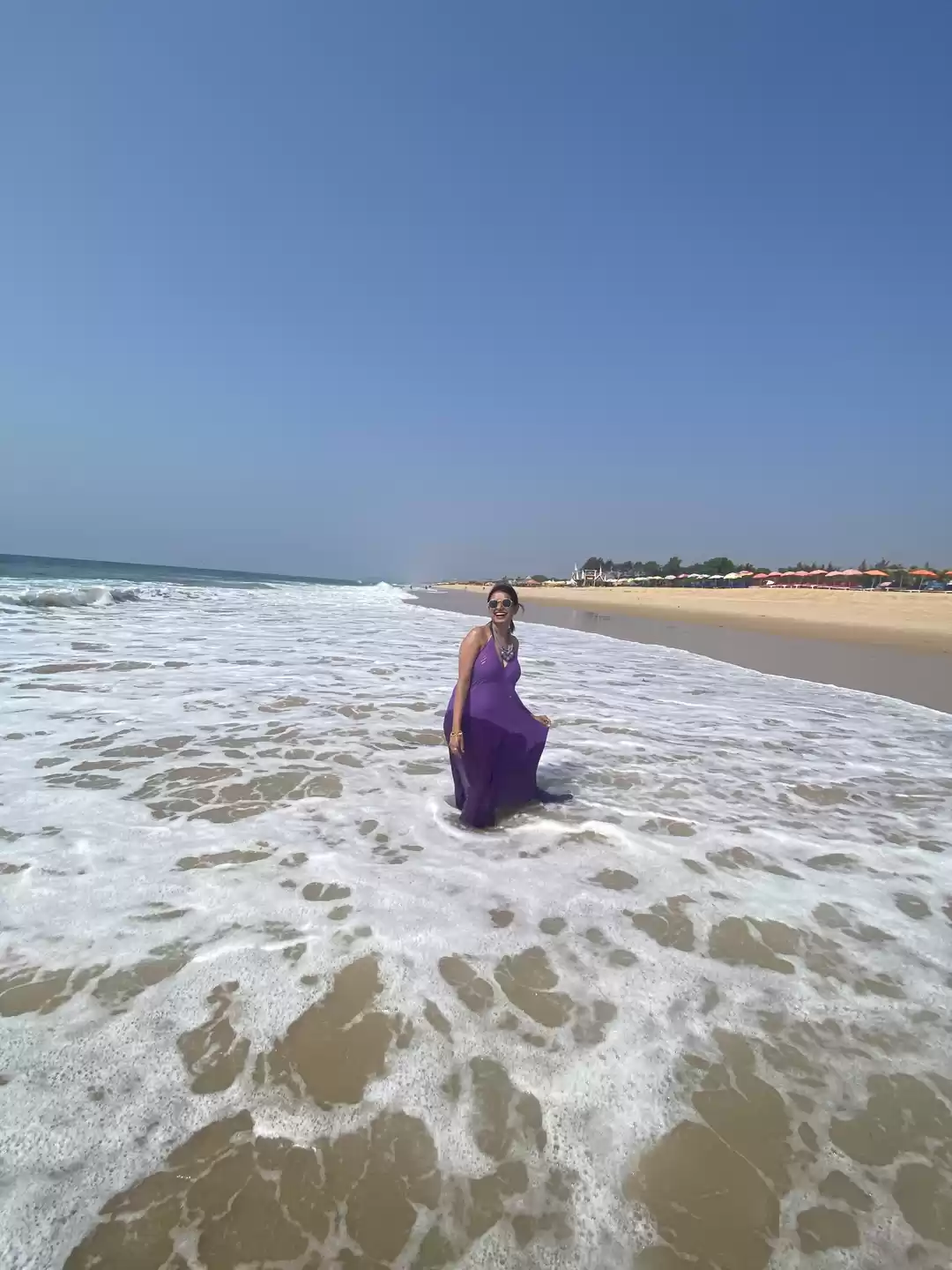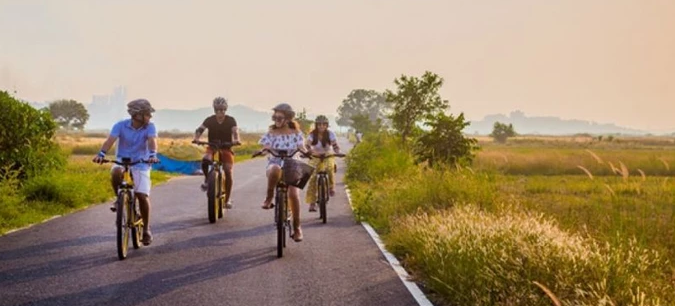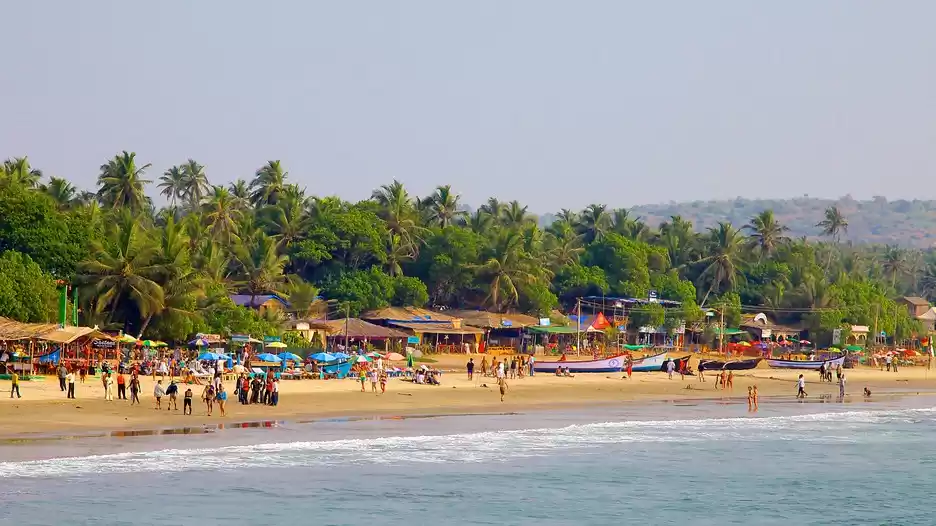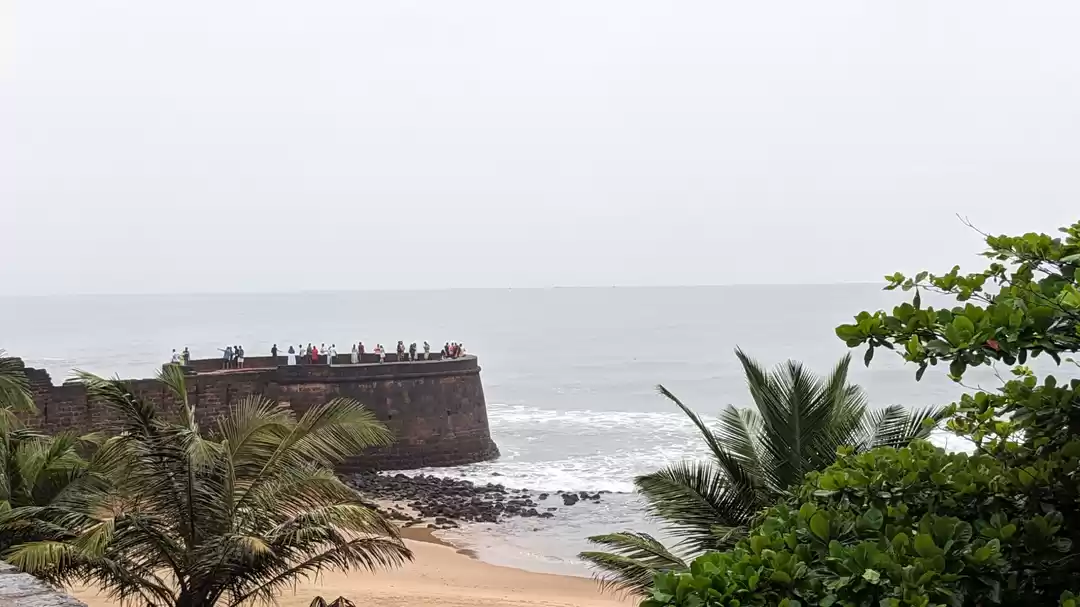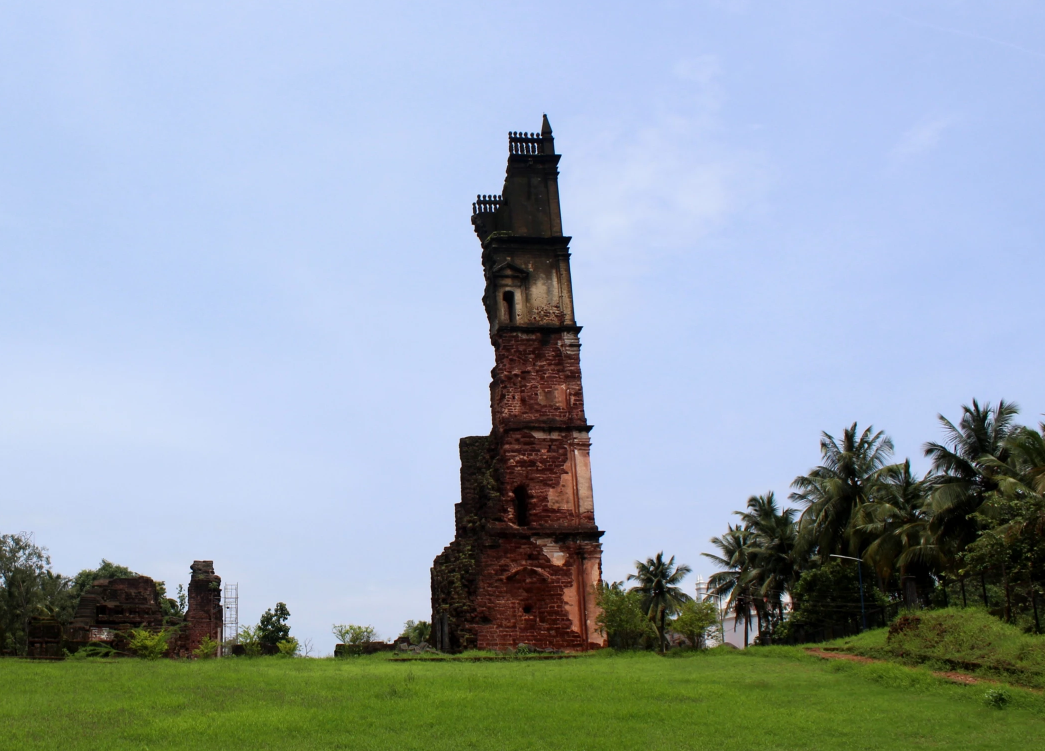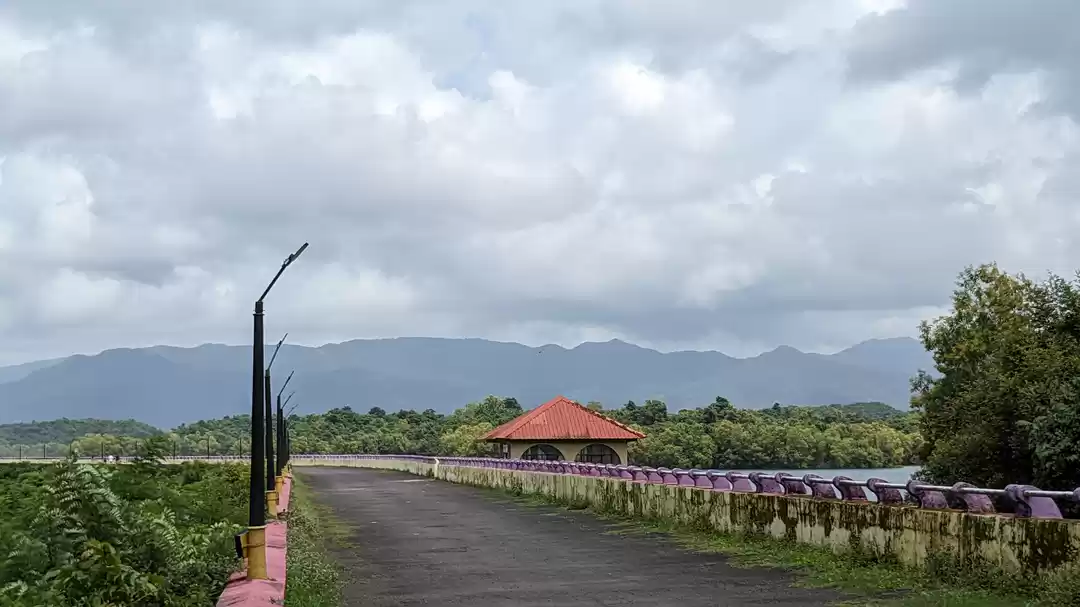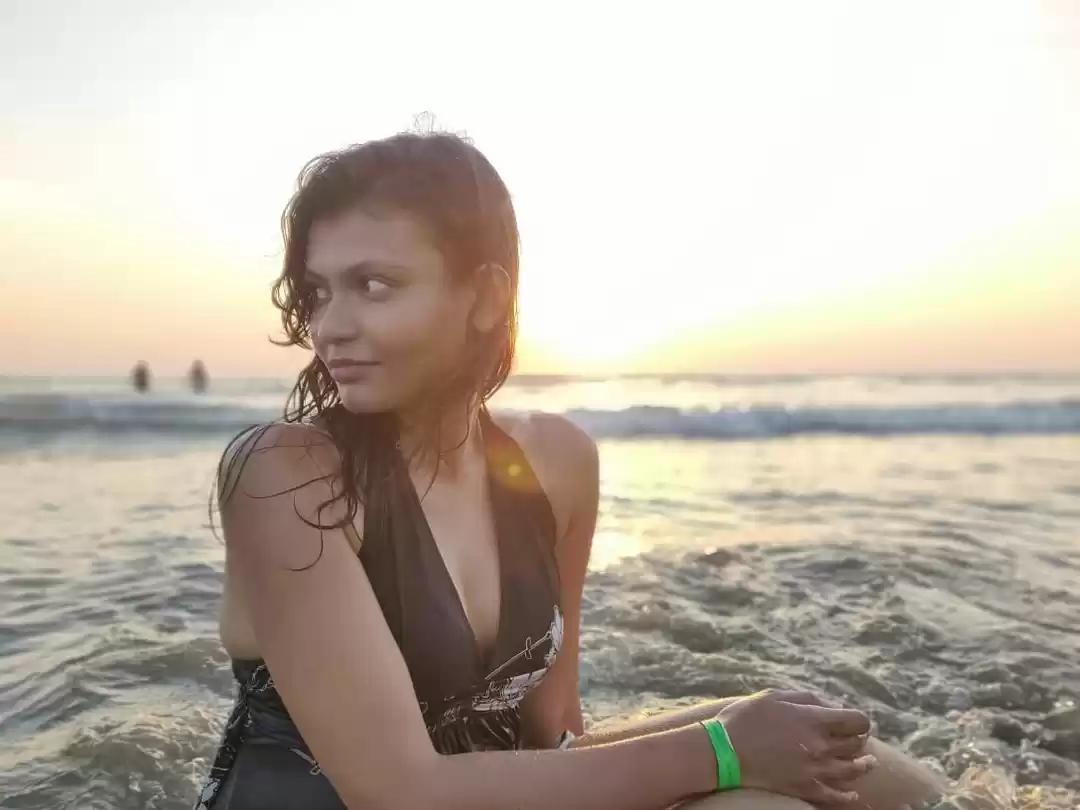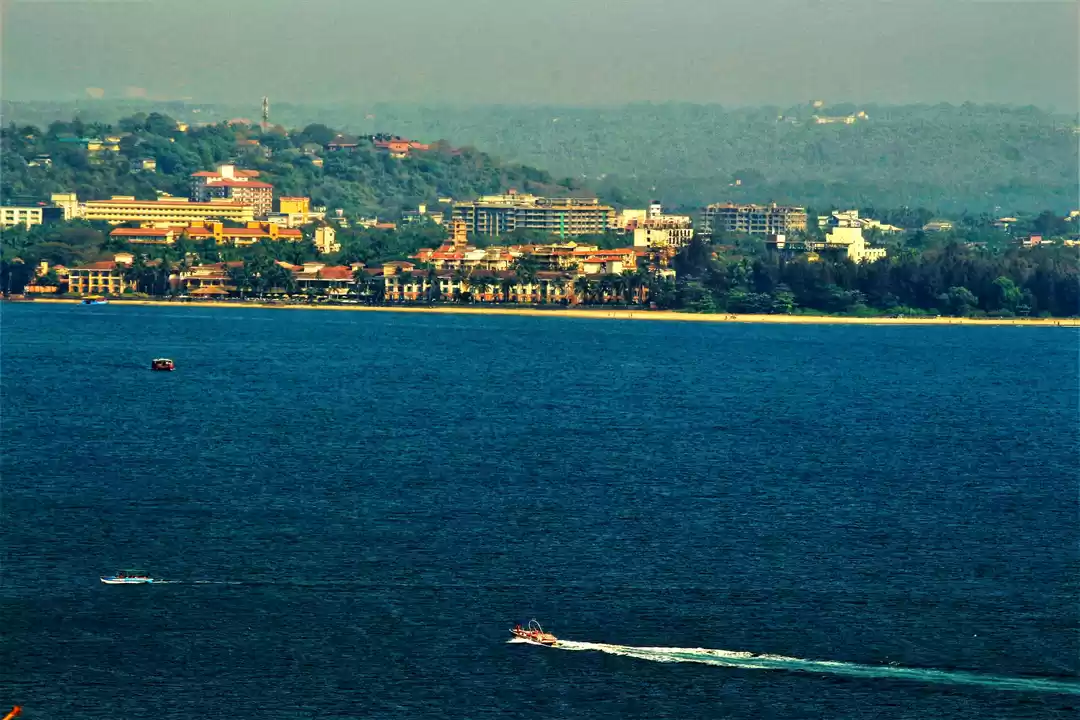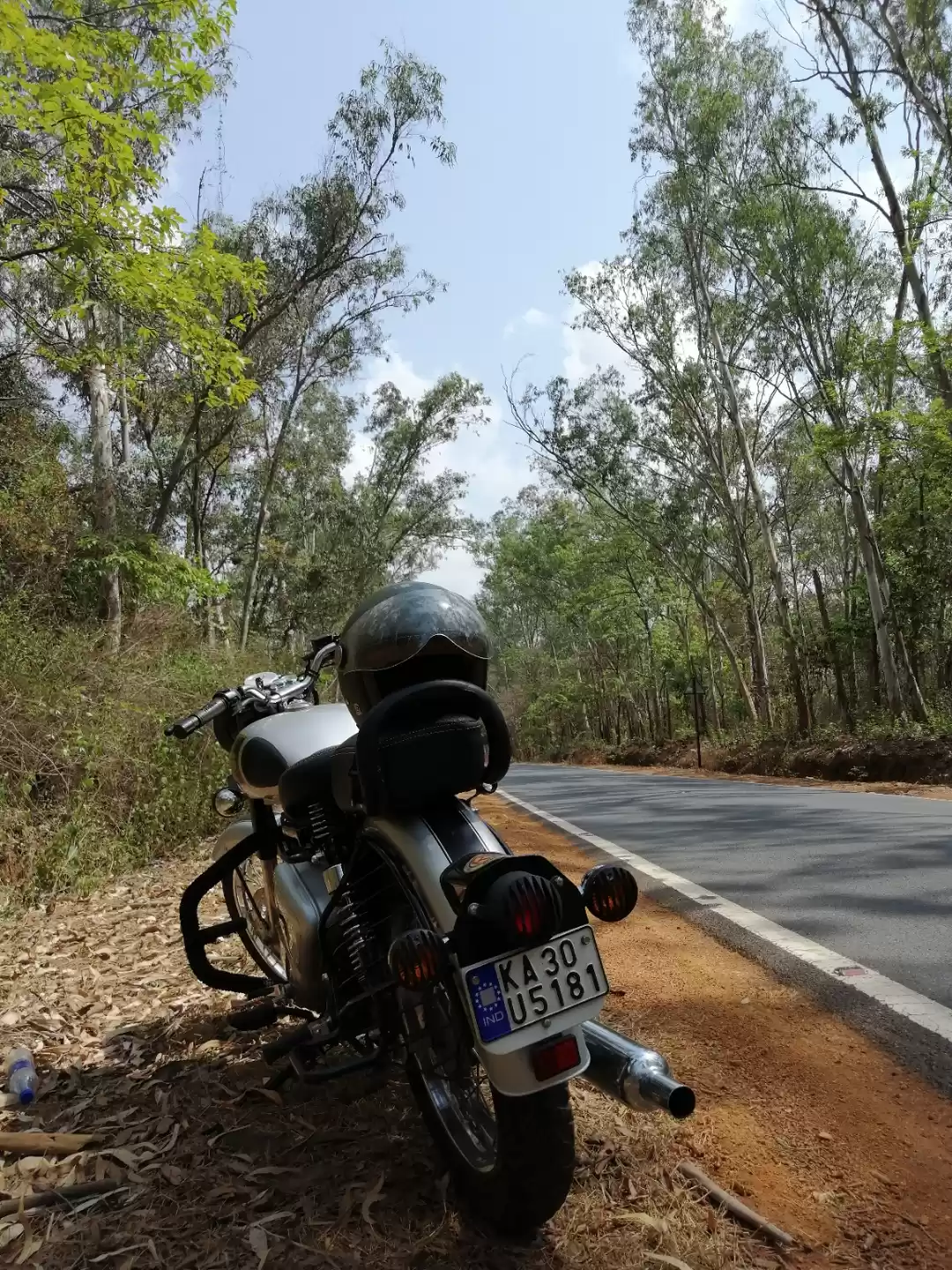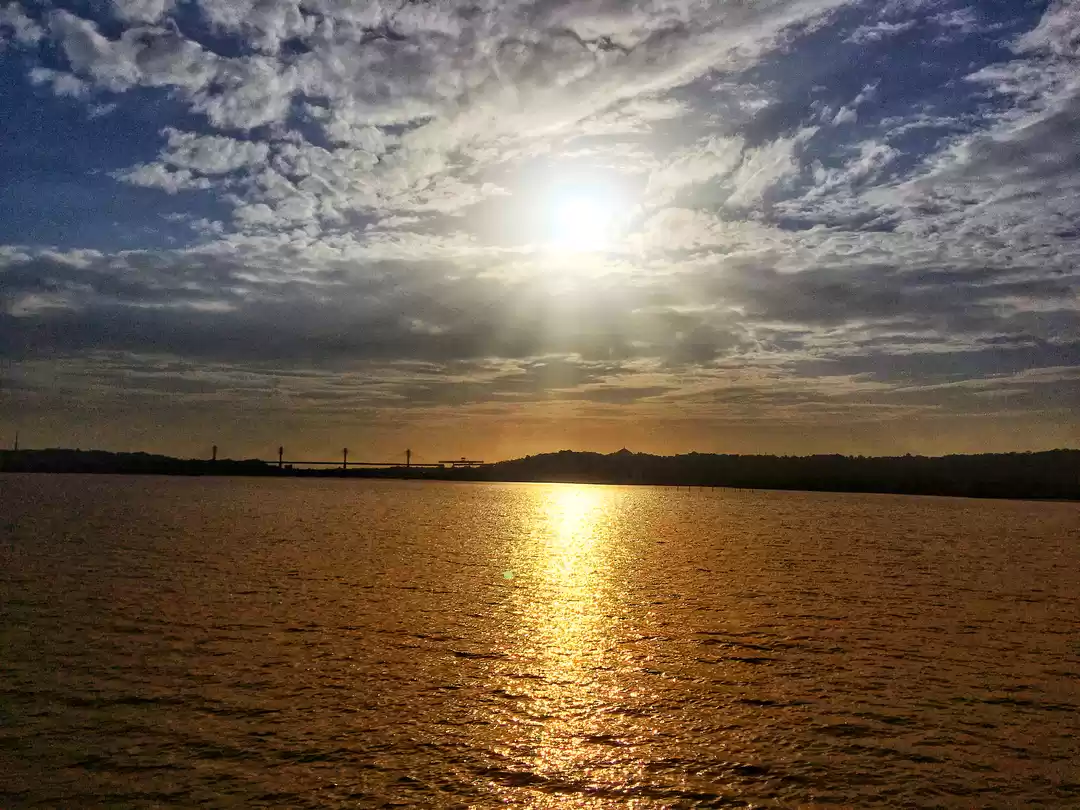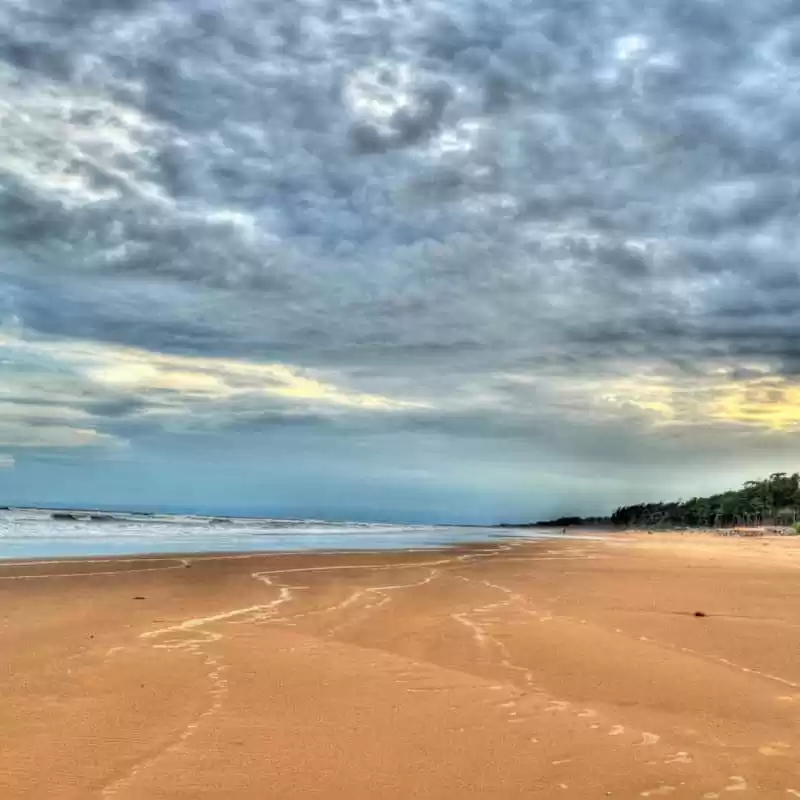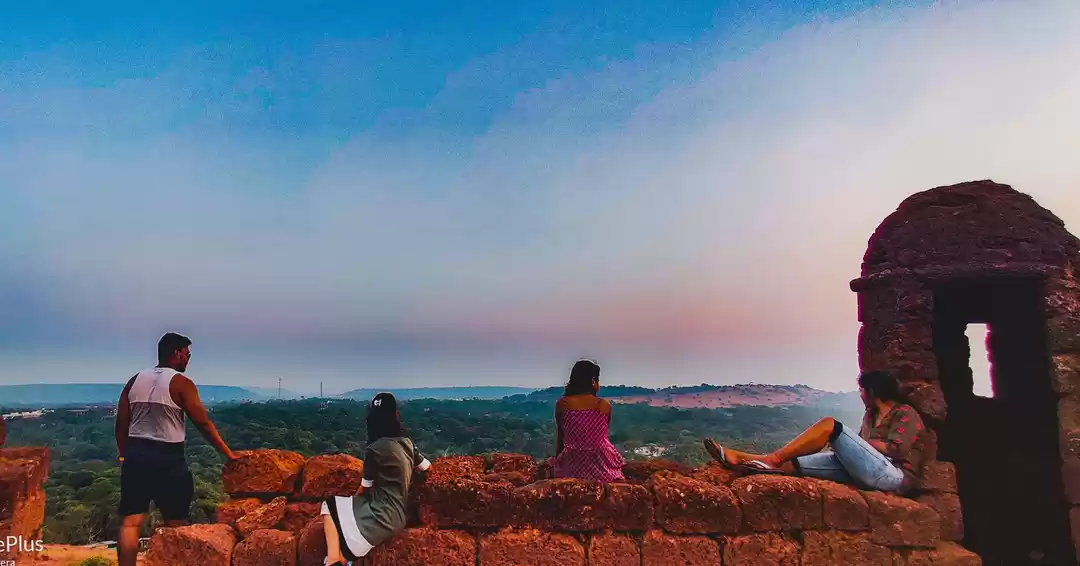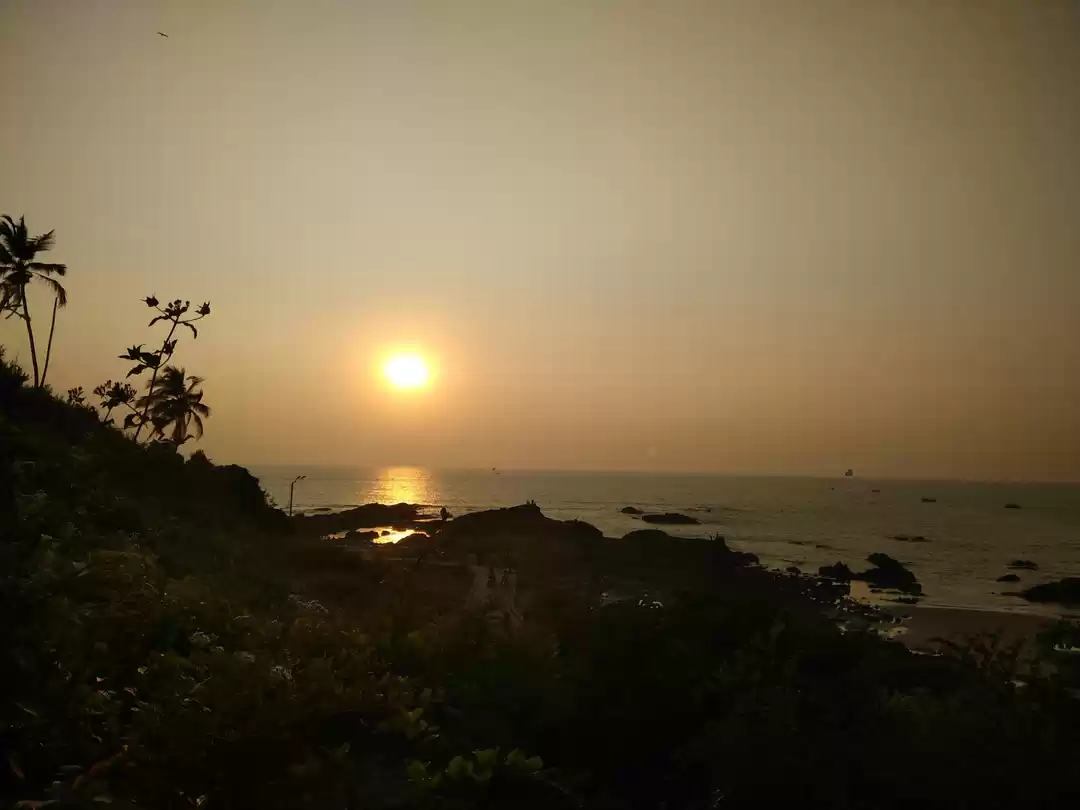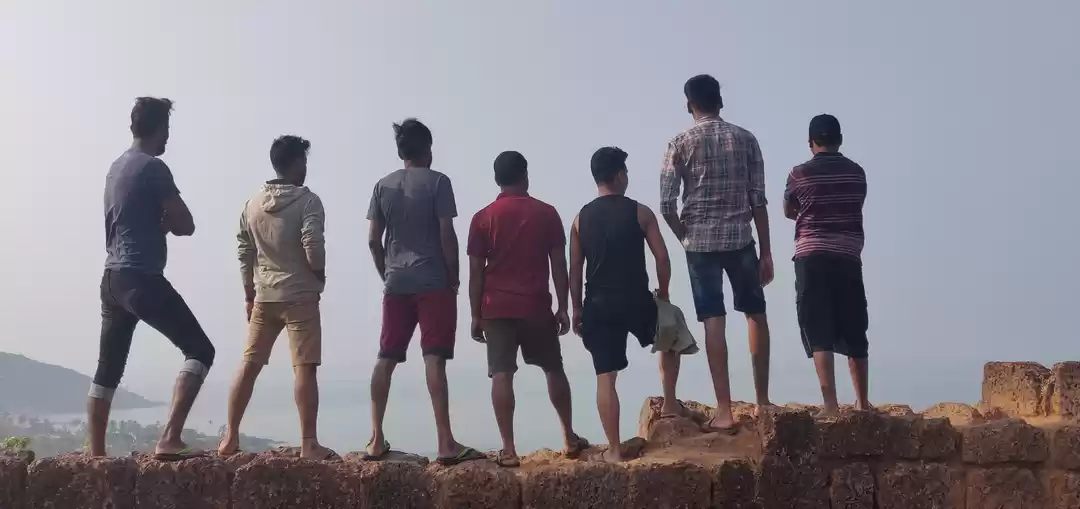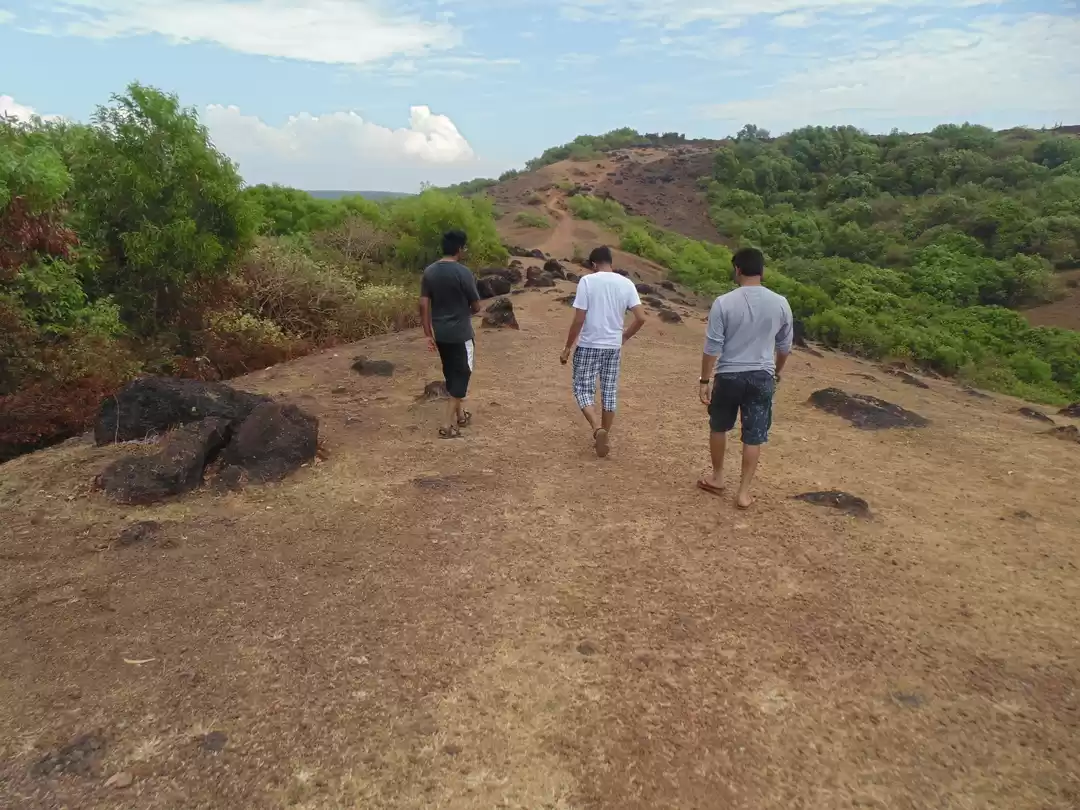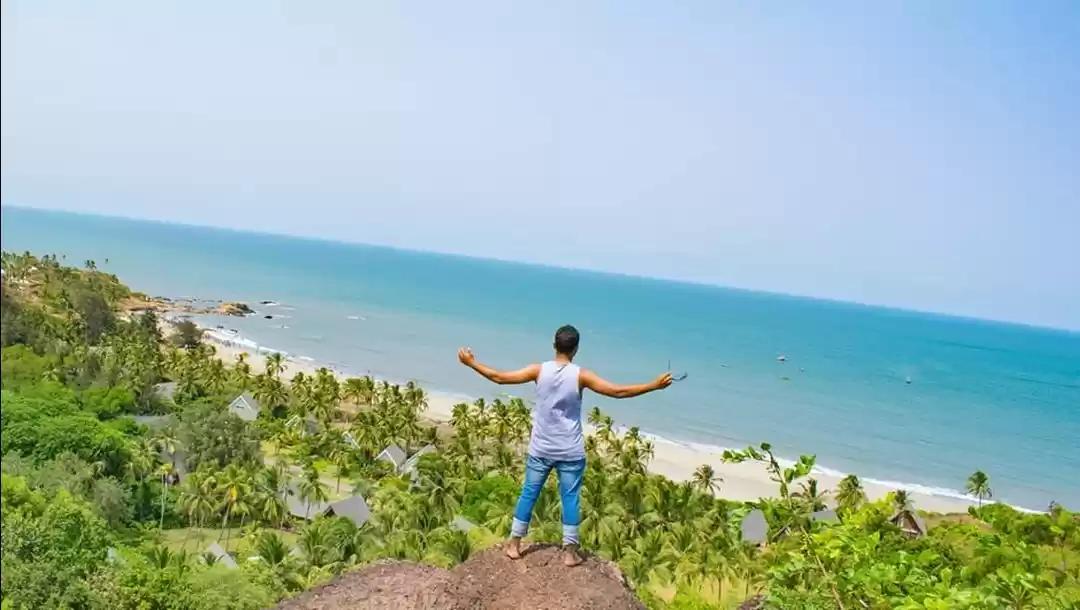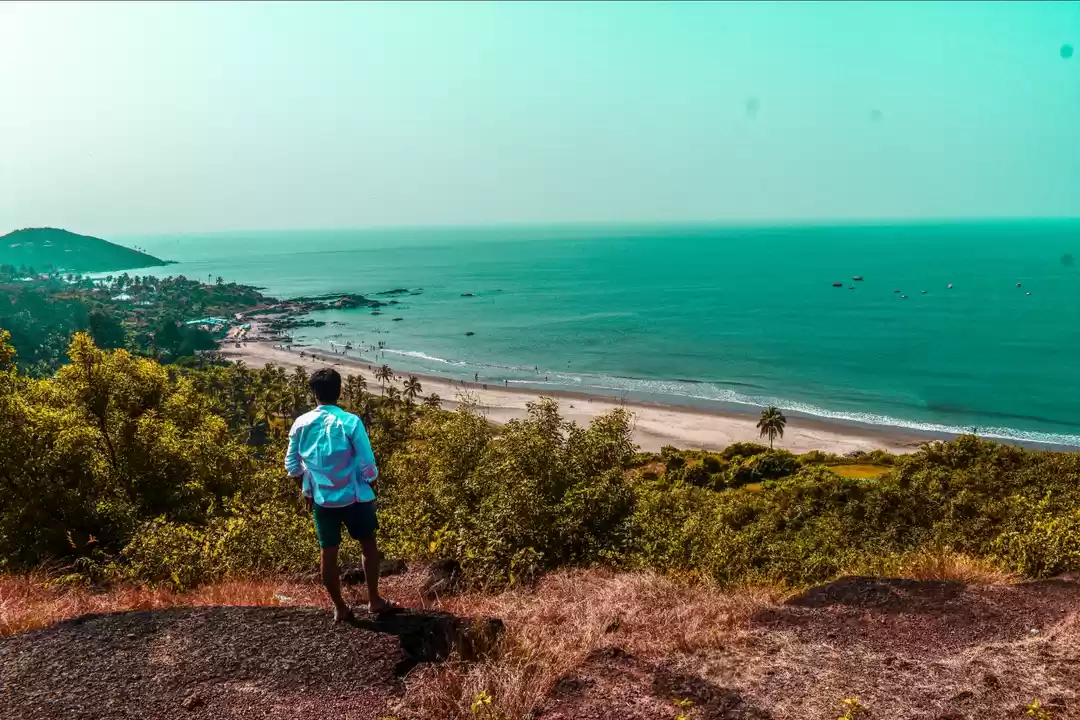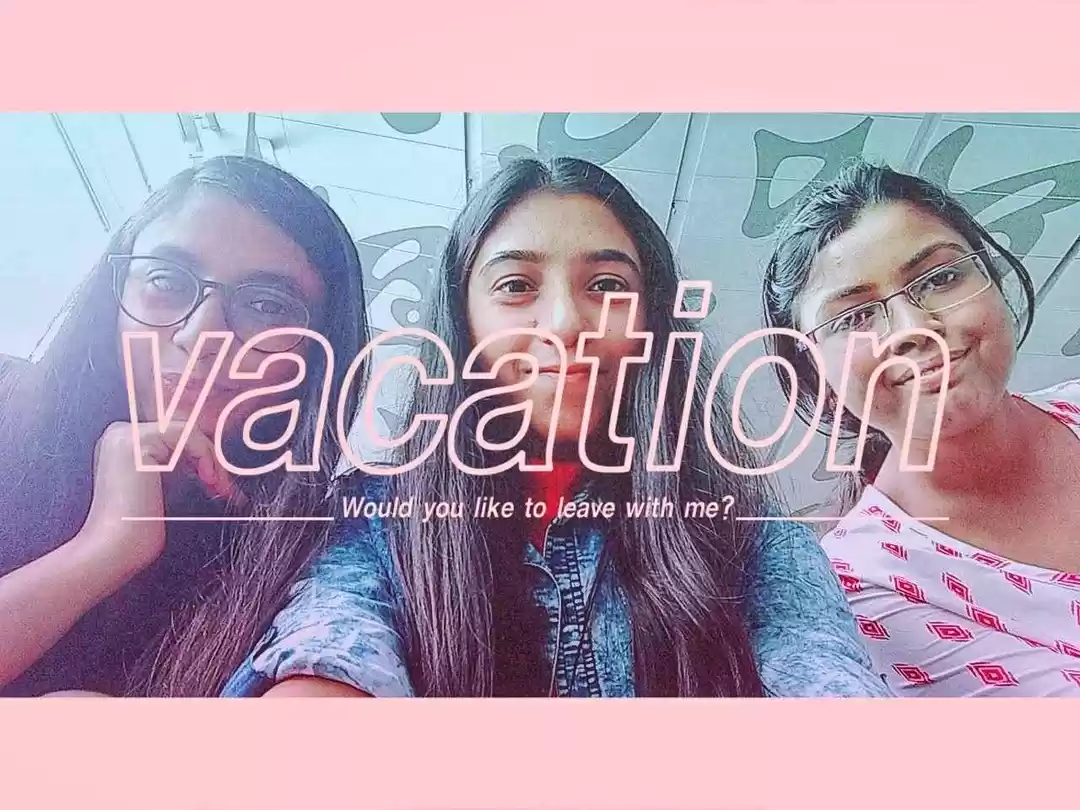Day 4:
For the past three days, we were in the city, amidst the people, crowded beaches and markets (although very sparse as compared to tourist season), so we decided to explore a different arena of Goa. We shifted form our resort in Candolim to Jungle hostel at Vagator. It was so quite there, that at first we didn't like it much. The hostel had a kitchen, where the residents had to prepare their own breakfast and clean their utensils by themselves. Although the route and surroundings were very pleasant to eyes. We passed through beautiful coloured houses and lush green meadows and farms. Coconut trees swinging with the wind on both sides of the road.


Panjim is the capital of Goa. It is a small but beautiful city. It had been three days, since we were in Goa but we had not explored, Panjim, yet. So for the fourth day, we planned to visit Panjim. It is approx 25 km from Jungle hostel. Soon after the breakfast, we left for Panjim on bike.
Our first point of visit was the Church of Our Lady of Immaculate Conception. Originally this church was made in the from of a chapel in 1541. Later in 1619, it was rebuilt into its present form. This beautiful church has become a landmark of Goa. Many Bollywood movies have been picturized at this location. Two very distinctive feature of this church are, it's zigzag crossed stairs and a huge ancient bell which was removed from the ruins of the Church of Our Lady of Grace in the premises of Church of St. Augustinian. It is such a beautiful church that you can spent hours just sitting there and appreciating it's beauty. The church remains open to the public daily from 9.00 am - 12.30 pm and 3.30 pm - 7.30 pm, but one must be modestly dressed to enter the church. It means that the person wearing nickers, shorts, minis or any such dress won't be allowed inside the church.

Located at a walking distance to this church, is one of the most beautiful residential area of the world, the Fontainhas. That was our next point of visit. Fontainhas is also known as Goa's Latin Quarter. It is the only Latin Quarter in Asia. It's colourful and fascinating streets, homes, shops, galleries are more than worth visiting. In the early 19th century, due to the spread of epidemic in Velha Goa, the Portuguese government headquarters was shifted to Panjim. As a result, Fontainhas was transformed into the residential area for Portuguese administrative officers and rulers. UNESCO declared Fontainhas as a heritage zone in 1984.

This place is full of history. Every building has its own story to tell. Confeitaria 31 de Janeiro which is more than 70 years old bakery was named after the date of a failed revolution in Portugal. As you move ahead through narrow lanes, you will come across some old churches, a red brick wishing well, art galleries, hotels, cafes, and bakeries. I've heard somewhere that it is mandatory for the locals here, to get their houses and buildings painted every three years and that too in vibrant florescent colours and pastels.
After walking through the streets of this beautiful area, we headed to Miramar beach which is one of the two beaches in Panjim. This beach is a confluence point of river Mandovi and the Arabian sea. This is one of the most visited beach in Goa. On the way, we stopped for coffee at CCD near Miramar beach.
It was getting darker till then and since we were staying near Vegator, which was a bit far. We decided to return. Vagator being a rocky beach, we didn't go there in dark. As there was not much to do, we slept after having dinner.
Day 5:
Climate in Goa is suitable for plants and trees. So, for the fifth day, we had planned a visit to Tropical Spice Plantation, situated in Ponda, Goa. A tour to spice plantation is a guided tour of around 1-1:30 hr.
We reached the plantation by 11:30 am. The route to the plantation was very picturesque. The entry ticket was costing 350/- that included the guided tour of the plantation followed by the lunch. The plantation is open from 10 am to 4 pm. On arrival, we were greeted by a garland and placing a Tika on forehead. We were offered lemon grass tea, which was very soothing. Then our guide took us to the plantation. She had extensive knowledge about the spices and herbs and their medicinal importance.

Having purchased a few herbs and oils and taking a scrumptious lunch, we left the plantation. Our next destination was Panjim again, where we had reserved our dinner on a cruise through GTDC. Since we had enough time left for cruise, we visited a wax museum in Velha Goa, near Basilica Bom Jesus. It is a private property and displays many statues of famous personalities, made up of wax.


From wax museum we left for Santa Monica Jetty. This jetty is in Panjim from where we had to take the cruise. The cruise sails on river Mandovi from Santa Monica to the confluence point with Arabian sea. As the cruise started sailing on Mandovi river, we were entertained by traditional dance and music shows by talented Goan artists.



The dinner was included in the ticket cost. Once the cultural program got over, everyone proceeded for dinner. There were both, vegetarian and non vegetarian cuisines. The quality of vegetarian food served was just o.k.. The cruise dropped us at Santa Monica at around 11:30 pm. We drove back to Jungle hostel. Although, we had to drive through deserted roads and uninhabited places, but I must say that Goa is very safe.
Day 6:
This day was our penultimate day in Goa. We had already planned to reserve one entire day for beaches. We started our day by visiting Vagator beach, which was at a walking distance from Jungle hostel.
Then we explored Anjuna beach. It is a rocky beach and is very famous among foreign tourists for its night parties.
After Anjuna we went Baga beach. Baga is a very crowded beach. It was full of tourists even in off-season. There at Baga, is situated one of the first and most famous discos of Goa, Tito's. This club is most popular with the young tourists in Goa. There are three clubs managed by Tito's- club Tito's, Cafe Mambo and Bollywood Discotheque.
Baga Beach

After spending much time at beaches, we returned to our room at Jungle hostel. In evening, we planned to visit Chapora fort, which was hardly 1 km from Jungle hostel. After sipping a cup of hot coffee and taking some rest, we left for fort Chapora. Fort Chapora is made on top of a hillock, east of Vagator beach. So one need to ascent which might be difficult and tiresome for elderly people. The white sandy stretch of Vagator beach could be seen from the fort. The north-facing wall overlooking the confluence point where the Chapora River meets the Arabian Sea, with Morjim Beach on the other side. This fort is also very famous among tourists. It gained more popularity after the movie 'Dil Chahta Hai' was shot here in 2001.

People usually come here in evening when the hot sun calms down a bit. The view of the sea and the sunset from it's wall is breathtaking.
We remained seated on the walls of fort Chapora even after sunset. As it was getting dark, people started returning. We too returned to our room and started packing our baggages, since we had to leave next day. Tired much, we took dinner and slept. Next morning with heavy heart we bid adieu to Goa.
How to Reach:
By Railways:
Goa is well connected to the rest of the country by rail, road and air. The main railway stations are Madgaon and Vasco-da-gama. These railway stations are well linked with Mumbai and in turn, to other major parts of the country. Konkan Railways, from Mumbai to Goa is considered to be the most scenic railway route of the country.
By Road:
National Highway 66 runs roughly north-south along the western coast of India, parallel to the Western Ghats. It connects Panvel in Mumbai to Kanyakumari, in Tamilnadu and passes through Goa.
By Air:
Goa is connected to almost every major city of India by air. Dabolim is the airport of Goa, which is in south Goa, around 30 km from Panjim. It also receive international flights in tourist season.
When to go:
Although the best time to go to Goa is from November to February but one can plan a visit at any time of the year. The months of June to August, being monsoon season, experience heavy rainfall.
What to carry:
You must carry a sunscreen (spf 30+), hats/caps, lip balm, sunglasses, water bottle, crocs/floaters for beach, swim wear, comfy cotton wears. In addition to this, you must carry a raincoat, if you are visiting Goa between June to September.
What we enjoyed and what we missed:
We went to Goa in September. The rainy season had about to end but it did rain any time. The tourist season had yet not started. So hotels and bike/car hiring were available at a cheaper rates. Although now an app based cab service has also started in Goa. The markets, roads, beaches were less crowded. Entire state was neat, clean and lush green.
Being off season we missed water sports as the sea was still quite rough. Water sports and other related activities as Dolphin Show starts mid October. Excursion to Dudh Sagar water fall was not recommended as the route to that fabulous fall becomes unsafe during rains. We also couldn't visit the famous flea markets of Goa which exists during main tourist season only, like Anjuna flea market (on every Wednesday), Arpora, Saturday night market, Friday flea market at Mapusa.
Frequent Searches Leading To This Page:-
Best Tour Packages for Goa, Goa Tour Package for Couple, Best Travel Packages for Goa, Best Goa Trip Packages, Goa Holiday Tour Packages, Top Goa Packages for Family, Goa Honeymoon Packages from Delhi





























